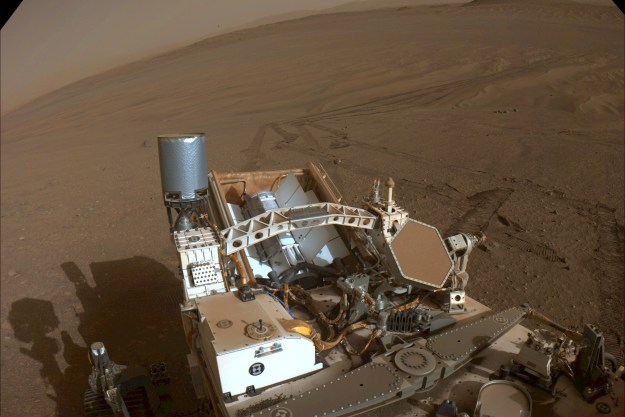Another update from the surface of Mars, as NASA’s InSight lander has successfully deployed its first instrument onto the planet’s surface. This week the lander placed its copper-colored seismometer onto the ground in front of it, from where the instrument can gather data about vibrations deep within the planet.
Placing the seismometer, formally known as the Seismic Experiment for Interior Structure (SEIS), was a delicate operation because it needed to be positioned just right, on level ground and avoiding any large rocks or other potential hazards. The NASA team made use of a model in the JPL test bed to make sure that the commands that they sent to the lander would result in the correct movements to place the instrument. They also used images gathered by the lander’s Instrument Deployment Camera to check the surface was clear of obstructions before the instrument was lifted off the lander body and placed onto the ground.
Another issue was that the lander is sitting in a sand-filled hollow that is at a slight angle, and the seismometer needs to be placed on level ground. The ground on which it currently sits is at a very slight angle of two to three degrees, but the team is confident that they can level it within the next few days.

The seismometer is InSight’s most important instrument, being required for three quarters of the mission’s science objectives. Its function is to listen for vibrations from within the ground of Mars, which are known as marsquakes. When a marsquake occurs, it acts like a flashbulb, allowing scientists to see the planet’s interior by looking at the way that the seismic waves pass through the different layers of the planet. With this information, the scientists can make determinations about the size of the layers inside the planet and the materials that they may be composed of.
Philippe Lognonné, principal investigator of SEIS, described the instrument as like an audio-capturing device — appropriate given that it captured the sounds of Martian winds recently. “Having the seismometer on the ground is like holding a phone up to your ear,” he said. “We’re thrilled that we’re now in the best position to listen to all the seismic waves from below Mars’ surface and from its deep interior.”
Editors' Recommendations
- NASA needs a new approach for its challenging Mars Sample Return mission
- Map of Mars shows the location of ice beneath the planet’s surface
- Perseverance rover’s Mars oxygen machine comes to the end of its mission
- Curiosity rover battles up a 23-degree slope in its exploration of Mars
- NASA lost contact with Mars Ingenuity helicopter for a week — but it’s OK now




